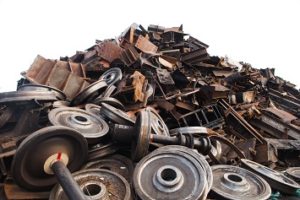When the U.S. Environmental Protection Agency (EPA) issues a final hazardous waste regulation, the regulated community safely assumes that’s that and all that now needs to be done is to accurately decipher the implications of the rule and follow its requirements. But that is not always the case, especially when litigation is involved and a court requires the regulation be revised. This is one such story.

Some Background
Over 2 years ago, the EPA issued its long-awaited final rule revising regulations affecting recycling of hazardous secondary materials (HSM) under the Resource Conservation and Recovery Act (RCRA). Effective on July 13, 2015, and known as the 2015 Definition of Solid Waste Rule (2015 DSW Rule), this final rule exempts certain HSM from the definition of solid waste (and thus from RCRA solid waste and hazardous waste regulations) but only if certain conditions are met. Yes, this is the rule that defines “sham” and “legitimate” recycling and provides these three exclusions from managing HSMs under the hazardous waste rules:
- A revised exclusion for HSMs legitimately reclaimed under the control of the generator;
- A new verified recycler exclusion, which replaced the transfer-based exclusion and requires an HSM recycler to be permitted or to obtain a variance from the EPA or the state; and
- A new remanufacturing exclusion for HSMs that are specified higher value solvents.
Just When You Thought You Understood the Rule …
Approximately 15 or more states have adopted all or many of the 2015 DSW Rule’s provisions. Because many of those states had previously adopted the 2015 DSW Rule’s predecessor—the 2008 DSW Rule—HSM generators in those states had to study the revised rule to figure out which requirements had changed and how. Generators new to the 2015 DSW Rule and expecting adoption of it in their state also had to wade through the 2015 DSW Rule’s provisions to determine how to recycle HSM in order to avoid having their recyclables regulated as hazardous waste.
But to make matters more confusing, on July 7, 2017, the U.S. Court of Appeals for the District of Columbia Circuit (D.C. Circuit) issued a decision in American Petroleum Institute v. EPA that deleted one of the four “legitimacy” factors set forth in the 2015 DSW Rule, invalidated the 2015 DSW Rule’s “verified recycler” exclusion, and reinstated the 2008 DSW Rule’s “transfer-based” exclusion.
What Exactly Did the D.C. Circuit Do?
4th legitimacy factor. “Legitimate recycling” is defined in the 2015 DSW Rule at 40 CFR 260.43 and includes four factors that codified what had been merely an EPA policy for years. The fourth factor, that “the product of the recycling process must be comparable to a legitimate product or intermediate” required that the concentration of hazardous constituents in the recycled product be “at levels that are comparable, or lower, than those found in analogous products.” The D.C. Circuit struck down this provision due, in part, to “the draconian character of the procedure it imposes on recyclers.”
However, the D.C. Circuit allows the fourth factor to remain in any regulation that specifically includes the four-factor legitimacy test of 40 CFR 260.43. For example, the generator controlled exclusion at 40 CFR 261.4(a)(24) specifically requires that reclamation of HSM be “legitimate, as specified under 40 CFR 260.43.”
Verified recycler exclusion. Of perhaps greater significance is the D.C. Circuit’s vacating of the 2015 DSW Rule’s verified recycler exclusion and replacing it with the exclusion that it had replaced in 2015: the transfer-based exclusion. The verified recycler exclusion had included some and deleted some of the transfer-based exclusion provisions and added other provisions requiring:
- The use of permitted or verified recyclers;
- Recordkeeping;
- Expanded containment of the HSM; and
- Emergency preparedness and response standards.
In reinstating the transfer-based exclusion, the D.C. Circuit kept the last two requirements from the verified recycler exclusion. In summary, now the recycler is not required to be permitted or obtain a variance. It’s up to the generator to make “reasonable efforts” to ensure that the reclaimer intends to properly and legitimately reclaim the HSM and not discard it.
For a chart that compares the 2008 DSW Rule, the 2015 DSW Rule, and the D.C. Circuit’s decision, go here.
So, What’s Next?
The D.C. Circuit’s decision does not go into effect until the court issues its formal “mandate,” which is likely to be delayed by the expected filing for a rehearing by the litigants. Will the D.C. Circuit’s decision be upheld? How will the changes finally agreed upon be implemented in the states? The answer to the first question is at this point unknown. The answer to the second question will depend on whether a state has an EPA-authorized RCRA program and whether or not an authorized state adopted the 2008 DSW Rule and/or the 2015 DSW Rule.
For an additional perspective on the state of the DSW Rule, you may want to attend the live BLR®—Business & Legal Resources webinar, “Big Changes for the Solid Waste Rule: Practical Impact of New D.C. Circuit Court Ruling on EPA’s 2015 Final Rule” on September 27, 2017.
